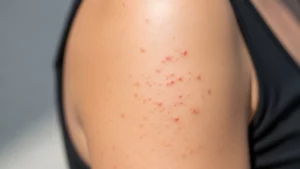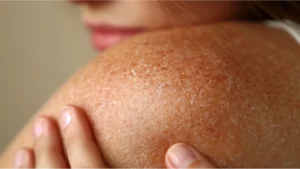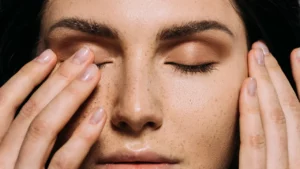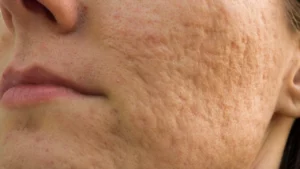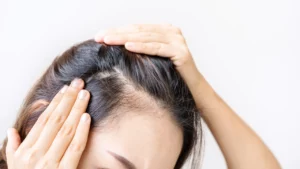The beauty industry has been flooded with “clean beauty” products that are free of artificial and potentially harmful ingredients. Although the phrase “clean beauty” may sound like a recent trend, the concept of clean beauty has been around for centuries. In ancient cultures, beauty was derived from nourishing and herbal treatments. Today, clean beauty products contain natural and organic ingredients instead of artificial and toxic chemicals. As consumers become increasingly mindful of the ingredients in their cosmetics and skincare, many are making the switch to a clean beauty routine. If you’re considering switching to clean beauty products, here are some tips for transitioning to a healthier, safer skincare regimen.
1. Research what ingredients to avoid. One of the most important steps in transitioning to a clean beauty routine is to do your research. While there is no official definition of clean beauty, many products labeled as “clean” are free of potentially harmful ingredients like silicone, parabens, formaldehyde, lead, and petrochemicals. Check labels to make sure that your products are free of ingredients like these.
2. Find a trustworthy source for clean beauty products. When shopping for clean beauty products, it’s important to ensure that you’re buying from a trustworthy source. Read reviews and ask friends and family for their recommendations. Avoid buying products from third-party vendors, as they may not be as knowledgeable about the ingredients used in the products they sell.
3. Start small. First, invest in a few staples, like cleansers, moisturizers, and sunscreen. These products are essential for basic skincare and won’t require a huge investment. Once you’ve mastered these basics, consider expanding your clean beauty collection with serums, exfoliants, and other skincare treatments.
4. Invest in quality. Clean beauty products may be pricier than conventional products, but a little research can go a long way when it comes to getting the best bang for your buck. Invest in quality products and do some research to find the products that will work best for your skin type.
5. Make the switch to natural makeup. If you’re a makeup lover, there’s no need to give up your favorite beauty looks. Look for products that are free of controversial and potentially dangerous ingredients like talc and parabens. Many natural and organic makeup brands are suitable for sensitive skin types and offer beautiful, long-lasting looks.
6. Read the label. Before purchasing any product, read the label carefully. Look for words like “non-comedogenic, “phthalate-free,” and “fragrance-free” to ensure that your product is free of irritants and allergens. Natural products should also contain fewer preservatives and more natural ingredients, so look for these as well.
7. Reach out for questions. If you’re still not sure which products you should use or if a particular product is clean, don’t hesitate to reach out to the brand and ask for more information. Many brands are transparent about the products they make and will be more than happy to answer your questions.
Switching to a clean beauty routine can be overwhelming at first, but it’s the first step to a healthier, safer skincare regimen. By doing your research, investing in quality products, and reading labels, you’ll be well on your way to achieving beautiful, clean-beauty results.
How do I transition to a new skincare routine?
1. Start by researching different products and ingredients. Consider researching what type of skin you have and what ingredients work best for your skin type.
2. Start by replacing one product at a time rather than overhauling the entire routine all at once. This will help your skin adjust.
3. Make sure to cleanse your skin before applying any new products. This will help remove any dirt and oil that has built up on your skin.
4. Choose products that are formulated for your specific skin type and concerns.
5. Give your skin time to adjust. If you experience any irritation, stop using that product and try something else.
6. Don’t forget to apply sunscreen during the day. This is a key component of any skincare routine and can help protect your skin from damage.
7. Pay attention to your skin’s response to the new products and adjust product usage as necessary.
8. Hydrate, hydrate, hydrate! Drink plenty of water to help keep your skin healthy and hydrated.
9. Finally, be consistent with your routine and take some time out of each day to take care of yourself.
What is the best age to start a regular skincare routine?
The best age to start a regular skincare routine is in your teenage years. At this age, taking preventative measures and protecting the skin from environmental damage will lay the foundation for a lifetime of healthy, youthful-looking skin.
What should be your 1st skincare routine?
1. Cleanse your skin twice daily: Washing your face twice a day is very important. Use a mild, non-irritating cleanser, such as a gentle gel or foam cleanser.
2. Use a toner: A toner helps to balance the skin’s pH level, remove makeup residue, and absorb excess oil.
3. Use a moisturizer: A good moisturizer can help to hydrate the skin, prevent dryness, and protect the skin from environmental aggressors.
4. Apply sunscreen: If you’re going in the sun, use broad-spectrum sunscreen with an SPF of at least 30.
5. Exfoliate: Exfoliation helps to remove dead skin cells and keep your complexion smooth and even. Use a mild scrub or chemical exfoliant no more than twice a week.
6. Use a face mask: Face masks help to hydrate and nourish the skin while giving it a healthy glow. Depending on your skin type, you can choose a hydrating, exfoliating, or purifying mask.


